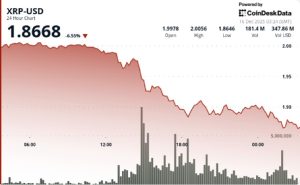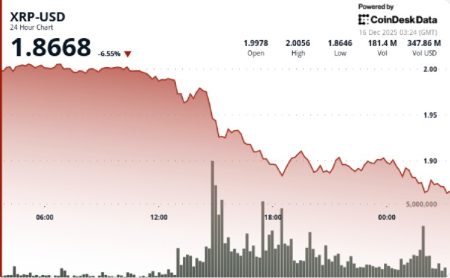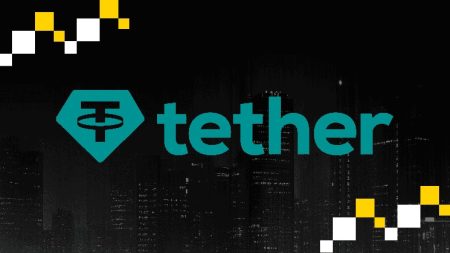Digital Asset Treasuries Face Uphill Battle to Maintain Premiums, Experts Warn
Investment Strategist Highlights Structural Challenges for Crypto Holding Companies
In a comprehensive analysis that has caught the attention of financial markets, Bitwise Chief Investment Officer Matt Hougan has outlined why most digital asset treasury (DAT) companies will struggle to maintain premiums over their underlying cryptocurrency holdings. His assessment comes amid a shifting landscape where regulated exchange-traded funds (ETFs) are increasingly viewed as more efficient vehicles for cryptocurrency exposure.
Hougan’s analysis, shared in a detailed social media thread on Sunday, provides a sobering perspective on the fundamental economics challenging DAT business models. These companies, which primarily exist to hold cryptocurrencies on their balance sheets, face what Hougan describes as a “high hurdle” to justify valuations above their crypto holdings due to a combination of operational expenses, limited liquidity, and execution risks that consistently erode shareholder value.
“Most will trade at a discount, and only a few exceptional firms will trade at a premium,” Hougan explained, establishing a framework that treats DATs as finite vehicles subject to predictable market forces. The assessment comes at a pivotal moment for the cryptocurrency investment landscape, as traditional financial products increasingly provide alternatives to these specialized holding companies.
The Structural Discount: Illiquidity, Expenses, and Risk
At the core of Hougan’s model are three downward pressures he characterizes as “certain” across the digital asset treasury sector. These factors create what amounts to a structural discount that most DATs will struggle to overcome.
The first factor, illiquidity, stems from the time gap between investment and potential liquidation. Hougan illustrated this concept by posing a straightforward question: “Why would anyone pay full price today for bitcoin you’d receive in a year?” This temporal disconnect creates an automatic markdown that grows more significant as perceived friction or holding periods increase, similar to how futures contracts typically trade at discounts to spot prices.
The second and third factors—expenses and risk—further compound this discount. “Every dollar spent on operating expenses or executive compensation comes out of your pocket,” Hougan noted, highlighting how operational costs directly diminish shareholder value in ways that don’t affect direct cryptocurrency ownership. Additionally, investors must price in the possibility that management “will slip up in some way,” introducing execution risk that pure cryptocurrency holdings don’t carry.
Together, these three factors create what Hougan describes as a baseline discount that investors rationally apply to DAT valuations before considering any potential upside. This structural disadvantage means that DATs start from behind and must find ways to add value merely to approach parity with their underlying holdings.
Limited Pathways to Value Creation
While Hougan identified four primary strategies DATs employ to increase their cryptocurrency-per-share ratio—issuing debt, lending tokens, using options strategies, and acquiring assets at discounts—he emphasized that these approaches offer limited and conditional benefits.
Debt issuance, for instance, can work in favorable interest rate environments but introduces leverage risk. Token lending may generate yield but exposes companies to counterparty and security risks. Options strategies might produce income but could backfire in volatile markets. Even acquiring assets at discounts requires special market conditions or relationships that few DATs can consistently access.
“Expenses and risk compound over time,” Hougan added, highlighting how the structural drag on DAT valuations tends to grow over longer timeframes, while any gains in cryptocurrency-per-share must be repeatedly achieved across market cycles. This compounds the challenge for DATs seeking to maintain premiums, as their value-creation levers must not only work but work consistently enough to overcome increasing downward pressure.
The analysis suggests that only exceptional execution across multiple dimensions could justify premium valuations for DATs. Most companies in this sector, lacking extraordinary advantages or execution capabilities, will naturally trade at discounts to their underlying holdings—a mathematical reality rather than a market inefficiency.
ETFs Emerging as “DAT Killers”
Hougan’s assessment comes amid broader sentiment shifts regarding cryptocurrency investment vehicles. Industry commentators increasingly view regulated exchange-traded funds as superior alternatives that offer cleaner exposure with fewer operational complexities.
Nate Geraci, co-founder of The ETF Institute, recently characterized spot cryptocurrency ETFs as “DAT killers” that have effectively ended the period when treasury companies thrived “via regulatory arbitrage.” His comments, citing earlier reporting on staking ETFs, highlight how the approval of spot cryptocurrency ETFs has fundamentally changed the competitive landscape.
Bloomberg senior ETF analyst Eric Balchunas reinforced this perspective, arguing that ETFs effectively serve the same function as DATs but “with good tracking,” meaning they mirror underlying asset performance more faithfully without the drag of operational expenses or execution risk. This cleaner tracking offers significant advantages for investors seeking pure cryptocurrency exposure.
Balchunas acknowledged that some institutional investors can only hold traditional securities like stocks or bonds, which provides companies like MicroStrategy with a remaining niche. However, he suggested this audience is “not enough for a bunch of them to thrive,” indicating that the DAT sector may face significant consolidation as ETFs continue gaining market share.
The Future Landscape of Cryptocurrency Investment Vehicles
As cryptocurrency markets mature and more regulated investment products emerge, the competitive positioning of DATs appears increasingly challenged. The analysis from Hougan and other market observers suggests a future where only exceptional DATs—those with unique advantages or extraordinary execution capabilities—will command premiums, while most will trade at discounts reflecting their structural limitations.
This evolving landscape has significant implications for investors, who now have more options than ever for gaining cryptocurrency exposure. The choice between direct holdings, ETFs, and DATs increasingly hinges on specific investment needs, tax considerations, and institutional constraints rather than simple availability.
For DAT companies themselves, the analysis underscores the importance of developing genuine competitive advantages beyond mere cryptocurrency holdings. Those that can minimize operational expenses, manage risks effectively, and consistently execute value-creation strategies may still thrive, while others may struggle to justify their existence in a marketplace increasingly dominated by more efficient alternatives.
As the cryptocurrency investment ecosystem continues to evolve, the insights provided by Hougan and other market observers offer a valuable framework for understanding the economic realities that will shape which investment vehicles ultimately succeed in providing value to cryptocurrency investors beyond simple exposure to the underlying assets.














